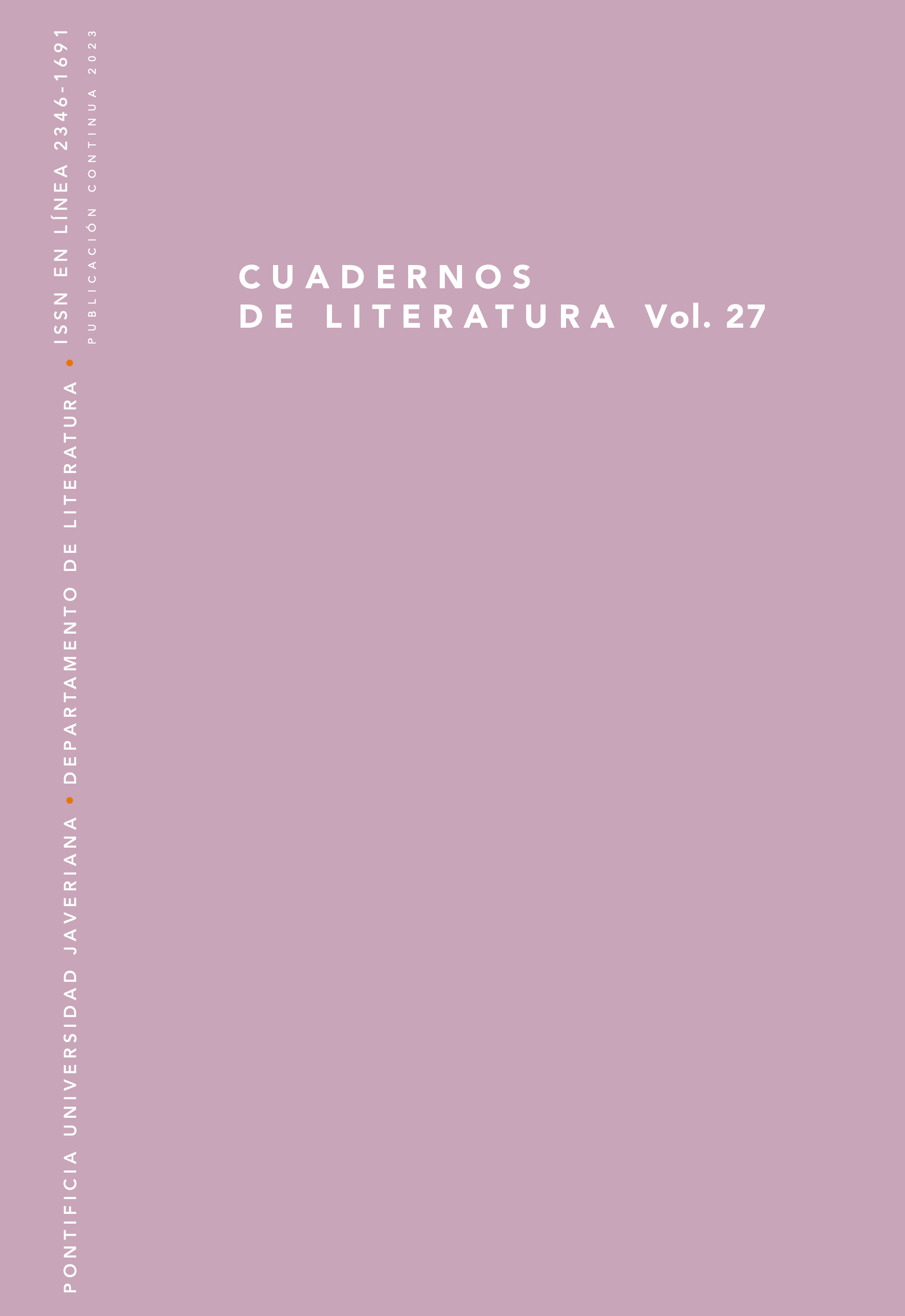Abstract
This article studies the graphic novel Beya (le viste la cara a Dios) (2013), by Iñaki Echeverría and Gabriela Cabezón Cámara, which narrates the abduction and prostitution of a woman in the so-called “conurbano bonaerense”, in Argentina. The kidnapping of the protagonist Beya will be interpreted through the Roman concept of homo sacer, as it was used by Giorgio Agamben in his homonymous book, which, in the ancient world, represented a “vita nuda” (‘bare life’). Furthermore, the article analyzes how the graphic novel represents the female body as a space of resistance and political contestation to the patriarchal system.
Agamben, Giorgio. Homo Sacer. El poder soberano y la nuda vida. Valencia, Pre-Textos, 2003.
Bergman, Marcelo y Mónica Szurmuk. “Memoria, cuerpo y silencio: El caso ‘María Soledad’ y la demanda de ciudadanía en la Argentina de los noventa”. Acta Poética, vol. 27, n.º 2, 2006, pp. 241-271.
Cabezón Cámara, Gabriela e Iñaki Echeverría. Beya (le viste la cara a Dios). Buenos Aires, Eterna Cadencia, 2013.
Domínguez, Nora. “Movimientos ficcionales y no ficcionales de la violencia. Crímenes de mujeres”. Aletria, vol. 1, n.º 23, 2013, pp. 137-147.
Favaro, Alice. “La ‘Beya’ durmiente: entre reescritura y transposición”. Cuadernos del Centro de Estudios de Diseño y Comunicación, n.º 74, 2019, pp. 43-56.
Fernández, Ana María. “Femicidos: la ferocidad del patriarcado”. Revista Nomadías, n.º 16, 2012, pp. 47-73.
Fleisner, Paula. La vida que viene. Estética y filosofía política en el pensamiento de Giorgio Agamben. Buenos Aires, Eudeba, 2015.
Foucault, Michel. Historia de la sexualidad. 1. La voluntad de saber. México, Siglo XXI, 2011.
Gallego Cuiñas, Ana. Las novelas argentinas del siglo 21. Nuevos modos de producción, circulación y recepción. Nueva York, Peter Lang, 2019.
Kleemans, Edward R. y Monika Smit. “Human smuggling, human trafficking, and exploitation in the sex industry”. Oxford Handbook on Organized Crime, editado por Letizia Paoli, Oxford University Press, 2014, pp. 381-401.
Lagarde, Marcela. “Del femicidio al feminicidio”. Desde el Jardín de Freud: Revista de Psicoanálisis, n.º 6, 2006, pp. 216-225.
Ludmer, Josefina. El cuerpo del delito. Un manual. Buenos Aires, Libros Perfil, 1999.
Palmeiro, Cecilia. “Ni Una Menos: las lenguas locas, del grito colectivo a la marea global”. Cuadernos de Literatura, vol. 23, n.º 46, 2019, pp. 177-195.
Perilli, Carmen. Las ratas en la Torre de Babel: la novela argentina entre 1982 y 1992. Buenos Aires, Letra Buena, 1994.
Regazzoni, Susanna. El cuerpo (re)escrito. Autoras argentinas del siglo XXI. Madrid, Editorial Verbum, 2021.
Ríos, Marina Cecilia. “Figuraciones del arte en narraciones contemporáneas de César Aira, Diamela Eltit, Mario Bellatin, Gabriela Cabezón Cámara e Iñaki Echeverría”. Universidad de Buenos Aires, tesis doctoral, http://repositorio.filo.uba.ar/handle/filodigital/10019
Segato, Rita Laura. La guerra contra las mujeres. Madrid, Traficantes de Sueños, 2016.
Sutton, Barbara. Bodies in Crisis. Culture, Violence, and Women’s Resistance in Neoliberal Argentina. Rutgers University Press, New Brunswick, 2010.
Varela, Cecilia. “La campaña anti-trata en la Argentina y la agenda supranacional”. Género y violencia en el mercado del sexo: política, policía y prostitución, compilado por Deborah Daich y Mariana Sirimarco, Editorial Biblos, pp. 109-149.
Viñas, David. De Sarmiento a Cortázar. Buenos Aires, Siglo Veinte, 1974.
Cuadernos de Literatura is registered under a Creative Commons Attribution 4.0 International Public License. Thus, this work may be reproduced, distributed, and publicly shared in digital format, as long as the names of the authors and Pontificia Universidad Javeriana are acknowledged. Others are allowed to quote, adapt, transform, auto-archive, republish, and create based on this material, for any purpose (even commercial ones), provided the authorship is duly acknowledged, a link to the original work is provided, and it is specified if changes have been made. Pontificia Universidad Javeriana does not hold the rights of published works and the authors are solely responsible for the contents of their works; they keep the moral, intellectual, privacy, and publicity rights.
Approving the intervention of the work (review, copy-editing, translation, layout) and the following outreach, are granted through an use license and not through an assignment of rights. This means the journal and Pontificia Universidad Javeriana cannot be held responsible for any ethical malpractice by the authors. As a consequence of the protection granted by the use license, the journal is not required to publish recantations or modify information already published, unless the errata stems from the editorial management process. Publishing contents in this journal does not generate royalties for contributors.



